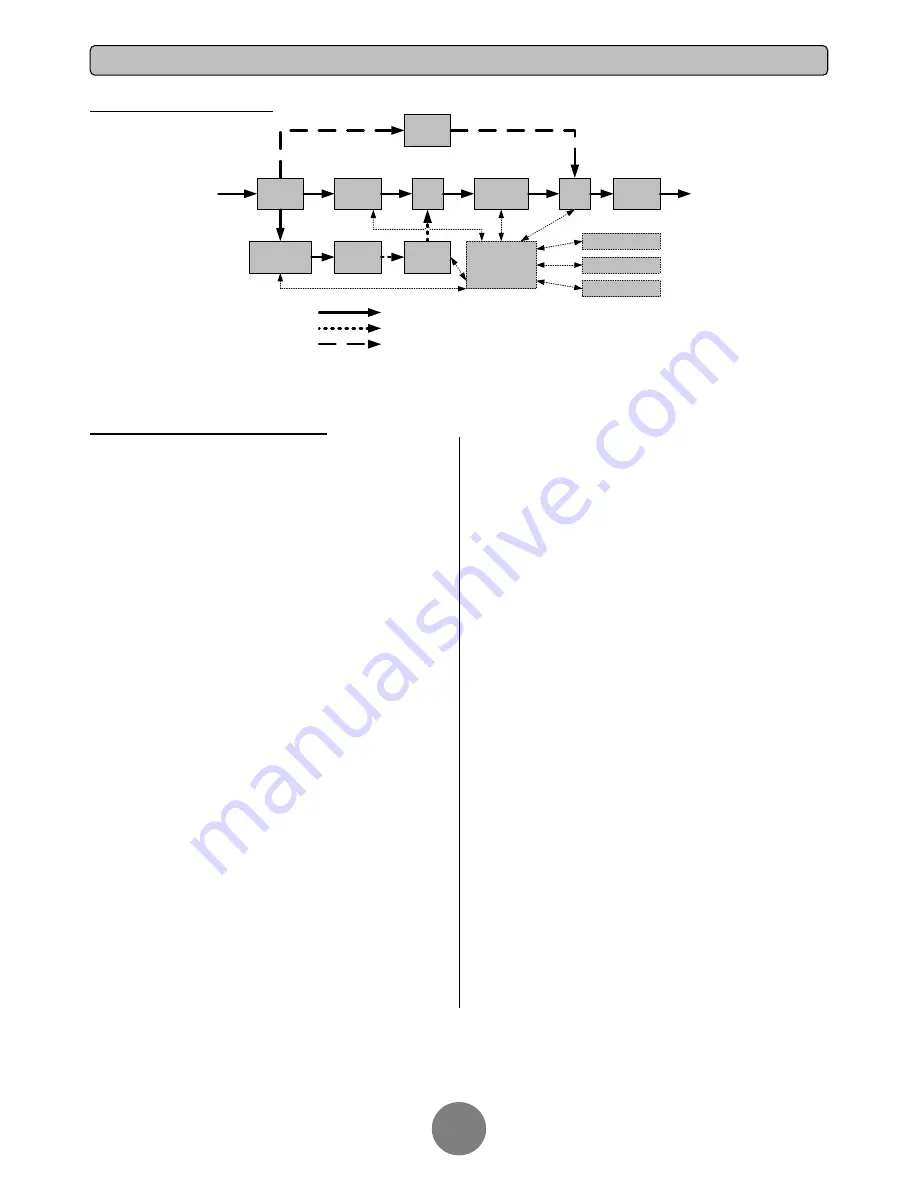
Copyright © 2012 CyberPower Systems, Inc.
INSTALLING YOUR UPS SYSTEM
3
SYSTEM BLOCK DIAGRAM
Output
Input
Filter
PFC
AC/DC
BUS
Inverter
DC/AC
INV
RY
Charger
AC/DC
Bypass
Battery
Output
Filter
Input
Line Mode
Battery Mode
Bypass Mode
Control
&
Monitoring
LCD Module
USB & DB9
SNMP Slot
DC/DC
HARDWARE INSTALLATION GUIDE
1.
Battery charge loss may occur during shipping and storage.
Before using the UPS, it’s strongly recommended to charge
batteries for four hours to ensure the batteries’ maximum
charge capacity. To recharge the batteries, simply plug the UPS
into an AC outlet.
2.
When using the included software, connect either the serial
or the USB cable between the computer and the corresponding
port on the UPS. Note: If the USB port is used, the serial port
will be disabled. They cannot be used simultaneously.
3.
Connect
your
computer,
monitor,
and
any
externally-powered data storage device (Hard drive, Tape drive,
etc.) into the outlets only when the UPS is off and unplugged.
DO NOT plug a laser printer, copier, space heater, vacuum,
paper shredder or other large electrical device into the UPS.
The power demands of these devices will overload and
possibly damage the unit.
4.
To protect a fax machine, telephone, modem line or network
cable, connect the telephone or network cable from the wall
jack outlet to the jack marked
“IN” on the UPS and connect a
telephone cable or network cable from the jack marked “OUT”
on the UPS to the modem, computer, telephone, fax machine,
or network device.
5.
Press the ON switch to turn the UPS on. If an overload is
detected, an audible alarm will sound and the UPS will
continuously emit one beep per second. For resetting the unit,
unplug some equipment from the outlets. Make sure your
equipment carries a load current within the unit’s safe range,
(refer to the technical specifications).
6.
This UPS is equipped with an auto-charge feature. When the
UPS is plugged into an AC outlet, the battery will automatically
charge, even when the unit is switched off.
7.
To maintain an optimal battery charge, leave the UPS
plugged into an AC outlet at all times.
8.
Before storing the UPS for an extended period of time, turn
the unit OFF. Then cover it and store it with the batteries fully
charged. Recharge the batteries every three months to ensure
good battery capacity and long battery life. Maintaining a good
battery charge will help prevent possible damage to the unit
from battery leakage.
9.
The UPS has one USB port (default) and one Serial port that
allows connection and communication between the UPS and
any attached computer running the PowerPanel
®
Business
Edition Agent software. The UPS can control the computer’s
shutdown during a power outage through the connection while
the computer can monitor the UPS and alter various
programmable parameters. Note: Only one communication
port can be used at a time. The port not in use will automatically
become disabled or the serial port will be disabled if both ports
are attached.
10.
EPO (Emergency Power Off) / ROO(Remote on/off) Port:
EPO/ROO ports allow administrators the capability to connect
the UPS unit to customer-supplied EPO/ROO switches. If EPO
is enabled, these installations give operators a single access
point to immediately power-off all equipment connected to the
UPS during an emergency. If ROO is enabled, these
installations give operators a access point to turn on/off UPS
remotely.
11.
To avoid electric shock, turn the unit OFF and disconnect
the unit from utility power before hardwiring the UPS (in/out
power cord). The in/out power cord
MUST
be grounded.

















